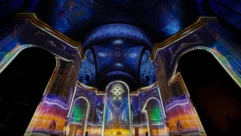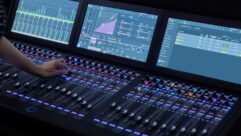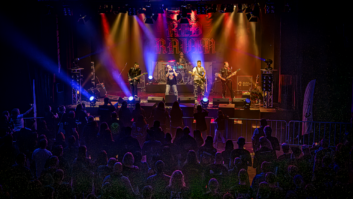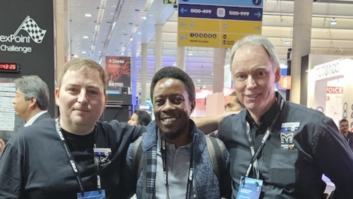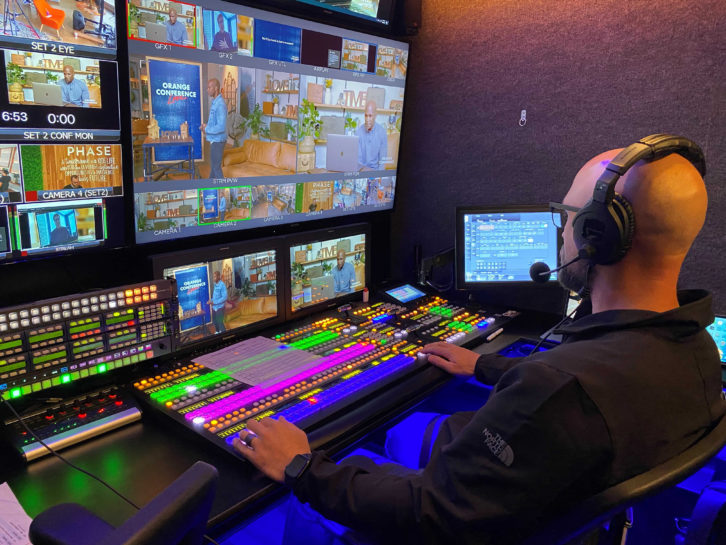
Live events, worship, education, business, healthcare, and government have all been rocked, and so have the lives of people who use those spaces. Adaptation has been swift and challenging. The need to communicate and connect, and the need to fight for our lives and economy has depended on AV and IT as never before. Here are just two of so many examples—from the professional to the personal— that crossed my desk. –Cynthia Wisehart
For years, Custom Media Solutions, a live event video production company based in Cumming, Ga., has provided streaming coverage of The Orange Conference, an annual event in Atlanta for Christian family ministry teams, with an online presence for people who could not attend.
When the COVID-19 pandemic forced Orange Conference 2020 to convert from a live, arena-sized event to a three-day streaming program that began on April 29, CMS relied on its HVS-2000 video switcher from FOR-A Corporation of America to deliver a high-end production to a much larger online audience.
“We automated as much as possible using the features from the switcher,” said Marc Shroyer, president of CMS. “We had a couple of still stores with user flags and a lot of lower-thirds from the ProPresenter presentation system. We used DVEs for picture-in-picture looks that we could display on the multi-view at all times, so we could decide when to use them on the fly.”
Most of the content was prerecorded, but live hosts connected the short segments together. Orange converted its local retail store, which was closed due to COVID-19, into three studio sets. Client cameras were used as studio cameras for the two main sets, and robotic cameras were positioned above the two sets to provide wide transition shots and a bird’s-eye view for the production crew. The third set, located upstairs and equipped with CMS’s Hitachi production cameras, hosted two live keynote presentations.
Due to social distancing requirements, CMS had to produce the event using less than half of its usual crew in its production trailer. The coverage required 16 inputs, 10 keyers, 11 DVEs, and at least four AUX buses, Shroyer notes.
One challenge the production faced was integrating a Zoom-based game show into the live program. During the game, the video switcher received two separate computer feeds, so the TD had the option of taking the Zoom gallery display of the four players or the full-screen speaker display. The host interacted with all four players through a monitor on the set (populated by one of the HVS-2000 AUX buses), which showed the Zoom gallery display as a picture-in-picture inside the game graphics and allowed the players to the see the game board. To avoid audio feedback, a USB interface sent the mix/minus from the digital mixer to the participants.
The ProPresenter system was used for playback of the recorded content, and two keys were used to show the timers from the ProPresenter’s second display on the confidence monitors. A backup system rolled the videos on a slight time delay. Each of the two main sets had a confidence monitor, which received feeds from the HVS-2000’s AUX bus.
Using the HVS-2000’s internal GPI system called user flags, the AUX bus feeding the confidence monitor would switch automatically to the second display from the backup system when necessary, so the hosts and crew always knew when the recorded content would end. The user flag would also make it switch it back to the primary stage display graphics when any other source was selected.
There were two streaming feeds; the main feed provided all programming to the Orange website, while a second feed only shared the two-hour main session to Facebook Live on April 29. At one point, the production had to cut the Thursday night feed to Facebook Live because of potential music copyright issues.
In anticipation of that interruption, Shroyer created a GPI interface between the HVS-2000 and a Clear-Com intercom system to allow switcher commands to be fired from communication panels at several stations in the production truck. From his location in engineering, Shroyer switched the AUX feed with transition to a graphic (without sound) and keyed a countdown timer from the ProPresenter system using the HVS-2000’s key over AUX function to let the Facebook Live audience know when programming would resume.
Staying Connected
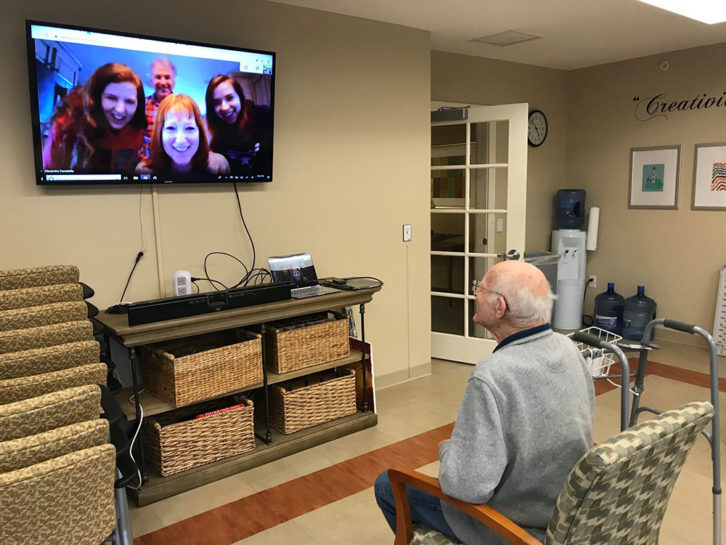 After Cornerstone Assisted Living in Milford, MA had to close its doors to visitors due to COVID-19, the senior community naturally turned to FaceTime, Zoom, and Skype calls via iPhones and iPads to connect residents with their loved ones. However, many of the residents had to hold the device close to their face in order to clearly hear the conversation and see their families. As a result, their families couldn’t see or hear them well. Yamaha UC’s director of global marketing and communications Meghan Kennelly, whose 93-year-old grandmother is a resident of the facility, reached out to see if Yamaha could help by donating a CS-700 all-in-one collaboration system.
After Cornerstone Assisted Living in Milford, MA had to close its doors to visitors due to COVID-19, the senior community naturally turned to FaceTime, Zoom, and Skype calls via iPhones and iPads to connect residents with their loved ones. However, many of the residents had to hold the device close to their face in order to clearly hear the conversation and see their families. As a result, their families couldn’t see or hear them well. Yamaha UC’s director of global marketing and communications Meghan Kennelly, whose 93-year-old grandmother is a resident of the facility, reached out to see if Yamaha could help by donating a CS-700 all-in-one collaboration system.
“Our residents are really enjoying seeing and hearing their loved ones more clearly on the big screen,” said Michelle Hamilton, director of community relations, at Cornerstone. “We are so appreciative of Yamaha’s generosity to help enhance their virtual visits with their friends and families.”




